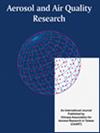Estimation of PM10 and PM2.5 Using Backscatter Coefficient of Ceilometer and Machine Learning
IF 2.5
4区 环境科学与生态学
Q3 ENVIRONMENTAL SCIENCES
引用次数: 0
Abstract
Air quality issues, including health and environmental challenges, have recently become more relevant in urban areas with large populations and active industries. Therefore, particulate matter (PM) estimation with high accuracy using various methods is required. In this study, PM 10 and PM 2.5 in Cheongju city, South Korea, were estimated using the attenuated backscatter coefficient of the ceilometer and meteorological observation data from an automatic weather station with supervised machine learning (ML). The backscatter coefficient data were obtained from the vertical layer with the highest correlation with PM 10 and PM 2.5 . The estimation methods utilized were tree, vector, neural, and regularization-based supervised ML. The extreme gradient boosting method yielded the highest PM estimation accuracy. The estimation of PM 10 and PM 2.5 for the test data set was more accurate than that in previous studies that used satellite and ground-based meteorological data (bias = 0.10 µ g m –3 , root mean square error (RMSE) = 14.44 µ g m –3 , and R = 0.92 for PM 10 ; and bias = 0.12 µ g m –3 , RMSE = 7.16 µ g m –3 , and R = 0.91 for PM 2.5 ). Particularly, the correlation coefficient was the highest for the estimation results for strong haze cases (1 km < visibility ≤ 5 km) ( R = 0.95 for PM 10 ; R = 0.89 for PM 2.5 ). Therefore, PM estimation using meteorological observation data can help obtain meteorological and PM information simultaneously, making it useful for air quality monitoring.基于Ceilometer后向散射系数和机器学习的PM10和PM2.5估算
本文章由计算机程序翻译,如有差异,请以英文原文为准。
求助全文
约1分钟内获得全文
求助全文
来源期刊

Aerosol and Air Quality Research
ENVIRONMENTAL SCIENCES-
CiteScore
8.30
自引率
10.00%
发文量
163
审稿时长
3 months
期刊介绍:
The international journal of Aerosol and Air Quality Research (AAQR) covers all aspects of aerosol science and technology, atmospheric science and air quality related issues. It encompasses a multi-disciplinary field, including:
- Aerosol, air quality, atmospheric chemistry and global change;
- Air toxics (hazardous air pollutants (HAPs), persistent organic pollutants (POPs)) - Sources, control, transport and fate, human exposure;
- Nanoparticle and nanotechnology;
- Sources, combustion, thermal decomposition, emission, properties, behavior, formation, transport, deposition, measurement and analysis;
- Effects on the environments;
- Air quality and human health;
- Bioaerosols;
- Indoor air quality;
- Energy and air pollution;
- Pollution control technologies;
- Invention and improvement of sampling instruments and technologies;
- Optical/radiative properties and remote sensing;
- Carbon dioxide emission, capture, storage and utilization; novel methods for the reduction of carbon dioxide emission;
- Other topics related to aerosol and air quality.
 求助内容:
求助内容: 应助结果提醒方式:
应助结果提醒方式:


